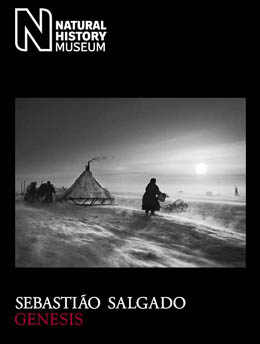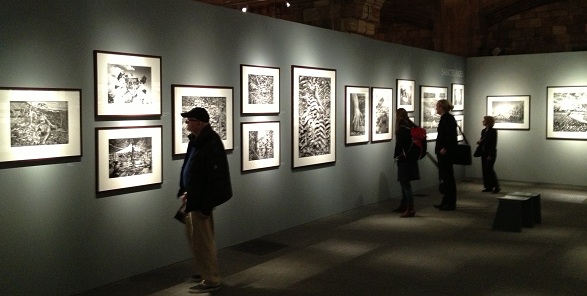London Photo Exhibitions: Man Ray & Sebastião Salgado
- At June 09, 2013
- By John
- In EOS 1Ds Mark III, Exhibition, Man Ray, Photographer, Sebastião Salgado
 0
0
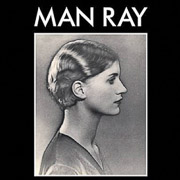
This last weekend I spent 24 hours down in the capital primarily to attend Eric Clapton’s last night at the Royal Albert Hall. Not one for spending much time browsing London shops these days, to make good use of my free time I looked to see if there were any photography exhibitions of interest. Two caught my eye: Man Ray Portraits at the National Portrait Gallery, and Sebastião Salgado: Genesis at the Natural History Museum. I was well acquainted with the works of Man Ray, but to be truthful Sebastião Salgado was not a photographer whose work I was that familiar with, although as soon as I entered the exhibition I realised that I have come across several of his images before. Much like the Clapton concert the exhibitions provided some extraordinary moments and some disappointments, but not necessarily due to the photography as I’ll reveal below. Here’s my take on both exhibitions.
Man Ray Portraits at the National Portrait Gallery
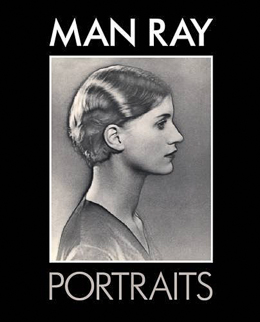
This exhibition at the National Portrait Gallery, featured a lage number of his portraits, and has generally been very well recieved. It gained 4-star reviews by both Time Out and the London Evening Standard, so I went with high expectations. I found it rather dissapointing however, and would struggle to award 3 stars in my book. This wasn’t entirely due to the photographs on offer but largely to how the exhibitions was presented at the NPG. It was housed in an small, rather chlosterphobic space, giving the feeling it was a last minute affair relegated to some backroom annex and thus an exhibition of minor consequence. This was exacibated by the high number of people attending, renedering it nigh on impossible to step back and admire a picture at it’s optimal viewing distance. It was also rather hot, seemingly unventilated, cramped and substantially overcrowded, although to be fair this was a bank holiday weekend and the day before the exhibition was due to close. However, the NPG really should have limited the number of people viewing at any one time and instigated a rota system for such a small viewing area.
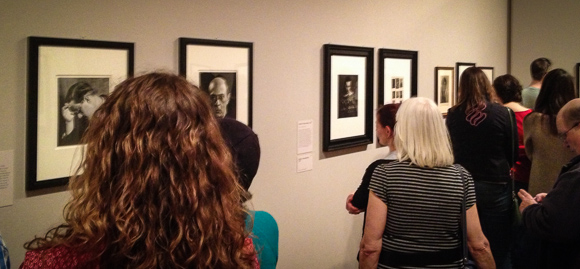
The exhibition featured over 150 vintage prints and some key works by Man Ray on loan from international museums and private collections. These focused on his career in the USA and Paris spanning the years 1916 to 1968. There were many portraits of famous figures, such as Ernest Hemmingway, Salvador Dali, Pablo Picasso, as well as his lover Lee Miller, actress Catherine Deneuve and his famous muse Kiki de Montparnasse amongst many other. However, many of the prints presented are no bigger than a post card, and few exceed 10 x 8 inches. Whilst there are some of his most famous artistic works presented (such as black & noire 1936, Violon d’Ingres, 1929), and some interesting portraits, a lot of the other work I found quite dull.
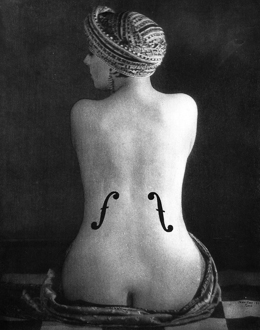
Sebastião Salgado at the Natural History Museum
The Sebastião Salgado: Genesis exhibition at the Natural History Museum couldn’t have been more different. Comprising a vast array of often huge, black and white prints, beautifully mounted and framed, and presented within a large, roomy, sensibly partitioned and sectioned side hall within the magnificent Natural History Museum. By huge I do mean huge too, with many prints in excess of 40 x 60 inches (and that’s not including the frame and mount), and the smallest you’ll see are still a still a healthy are 16 x 20 inches. They are all monochrome, moody and generally quite magnificent. The exhibition represents somewhat of a masterstroke for the Natural History Museum as this is the premier of the Sebastião Salgado: Genesis exhibition. Genesis is the culmination of an epic, eight-year long project by Salgado, which includes photographs from over 30 countries. The Natural History Museum exhibition continues until September 2013 followed by further openings in Toronto, Rome and Rio de Janeiro, and many museum shows in the coming years.Born in Brazil in 1944 Salgado went on to study economics but became a professional photographer in 1973. He relocated to Paris and worked for several top photo agencies, such as Magnum, and gained critical acclaim and notoriety for his reportage work, particually after his 1986 photograph of dispute between a Serra Pelada gold mine worker and military police in Brazil. In 1994, together with his wife, Lélia Wanick Salgado, they formed Amazonas Images to publicise his work through exhibitions and books. His books include, Other Americas (1986), Sahel: l’homme en détresse (1986), Sahel: el fin del camino (1988), Workers (1993), Terra (1997), Migrations and Portraits (2000), Africa (2007) and now his latest, Genesis.
Much of Salgado’s work has documented the plight of the persecuted, exploited, suppressed and displaced peoples of the world, and through this work has grown several epic projects. Notably his 1993 book Workers, where he presented a pictorial narrative of manual labour across the globe, particualy the vast array of mud-covered prospectors working in the Brazilian gold mines. Similarly, the book Migrations (2000), which took six years to complete, depicted peoples fleeing their homes to escape the ravages of poverty, war and repression. It goes with out saying that a significant proportion of his work has presented a pretty bleak take on life, so his latest project, Genesis, was part born from a desire to depart the bleakness and present something we can feel good about.
Genesis is a kind of homage to the beauty of the planet and at the same time I remember the terror, the things I saw that were very difficult to see. Sebastião Salgado
Returning to the farm in Brazi,l left to him by his father, Salgado was shocked to find decades of deforestation had brought the region close to ecological disaster. Together with his wife, they undertook to retrun the farm to natural forest, which ultimately proved so successful that the wildlife returned in droves enabling the land to become a nature reserve. This success planted a seed within Salgado, to photograph and record the last unspoiled places on the planet, to document most untouched indigenous tribes, and present the world in it’s most pristine and absolute glory; to serve as an environmental record of how the planet once was, in it’s Genesis state. And in doing this perhaps, help highlight the plight of worlds rapidly disappearing environment, ecology and cultures, that we should hold on to and protect for our future generations.
Genesis proved a mammoth project however, taking 8 years to complete, and included visiting places such as the Kalahari Desert, Sumatra, Antarctica, the Galápagos Islands, Madagascar, Ethiopia, Algeria, Zambia, Siberia and Brazil to name but a few. He also spent time living and traveling with many indigenous peoples, such as the Netets of Siberia, the Yali of Papua New Guinea, the Mentawai clan of Siberut Island, West Sumatra, and the Xingu tribe of his native Brazil.
The Exhibition
The exhibition hall is divided up into several thematic areas. Immediately upon entry you are greeted with the extremely impressive “Iceberg Between the Paulet Island and the Shetland Islands“of the Planet South following with photographs from the likes of Antarctica, Falklands Islands and South Shetland Islands. This, proceeded by sections for Sanctuaries, Africa, Northern Spaces and Amazonia and Pantanal, with each following seamlessly on from the previous and housing a somewhat numerous 214 photographs in total. Quite overwhelming. Salgado chooses to work exclusively in black and white; there is no colour here, but this suites the mood and theme.
Whilst this is undoubtedly an exhibition of ecological and environmental magnitude, first and foremost you are captivated by the pure beauty of his compositions. Some say they appear a little contrived and too composed, but he is an artist after all and these are without doubt, impressive works of art. Some ethnic tribal shots may be choreographed, but they are indeed a images of great beauty and should be admired as such. So many took my eye that they are too numerous to mention, but one in particular stood out for me, Mentawai man weaving, Siberut Island, West Sumatra, 2008, which is magnificent and mesmerizing. Another I feel I should acknowledge is Macaroni Penguins, Zavodovski Island, Sandwich Islands, 2009; an epic lansdcape depicting a vast hords of penguins scattered around the slopes of the snow covered, smoking Mount Asphyxia volcano. The Nenets in hostile weather, Yamal Peninsular, Siberia, 2011, the exhibition cover image, is also awesome, as are The Brooks Range, Alaska, 2009, the Zo’e Indians, Amazonia, Para State, Brazil, 2009, and the striking dust and paint covered Singsing festival performer, Western Highloands of Papua New Guinea, 2008. Another beautiful, captivating and striking image for me was young girl being painted in Amuricuma ceremony, Kamayura village. High Xingu, Mato Grosso State, Brazil, 2005.
The Printing
The photographs themselves are printed large, the smallest size being a healthy 16 x 20 inches (not including the mount) and these look fantastic. Many are larger still at around 20 x 30 inches which still look very impressive, but there are several really huge prints in excess of 40 x 60 inches. However, here over-enlargement begins to tell and on some appears visibly detrimental, unless of course viewed from a substantial distance which wasn’t always possible. Salgado started shooting digital in 2008, using a Canon EOS-1Ds Mark III, and this was easily discernible when viewing. It’s also obvious some digital captures been enlarged beyond the capabilities of the 21MP camera . His pre-2008 photo’s are from scans of medium format negatives, many of which appear to have been shot on high ISO film thus very grainy; here too, the extreme enlargements take on a rather artistic, painterly quality upon closer inspection. It’s perhaps only us ‘photographers’ who can’t help pixel-peeping to this level, and i suspect for the non-photographers amongst the audience these things may never be an issue.
The pictures themselves are typically high contrast. Salgado’s Photoshop work seems quite impeccable and he’s not afraid to push areas into pure white and black and make the very most of any natural light. Some appear almost 3 dimensional, a few (such as Elephant Seal South Georgia, 2009) almost HDR like. I was pleased see however, none are over-sharpened (a common trait in modern photography exhibitions!) so not a single edge-halo in site. Most (but not all) are printed on Ilford Gallerie Prestige Gold Fibre Silk, a high quality, semi-gloss paper well suited to monochrome prints of this nature. A select few however, are printed on matt and these look flat, dull, and painterly, and lack detail in comparison to the others so look oddly out of place.
As a photographer, I’d love to have some technical information about the photographs, such as what camera and lens were used, the aperture and ISO settings, what filters were used if any, what the conditions were like. Sadly there’s nothing offered in that respect and very little text written about each photograph either. This is not uncommon however, as it would seems the people who compile these exhibitions must not be photographers themselves. Unfortunately the Genesis book (see below) fares no better in this respect.
Some Minor Criticisms
Whilst I thorough enjoyed this exhibition there was once aspect I found quite annoying. No matter where you stood to view any of these fantastic photographs, you could not avoid seeing reflections of white mounts of pictures hung on the opposite wall. I found this very distracting and in some places it really impairs your viewing pleasure. There is really no excuse for this. Since the collection is a sponsored, traveling exhibition, I presume the Natural History Museum were not responsible for framing these pictures behind glass, although I wold hazzard a guess the NHM were responsible for the layout and hanging. The golden rule is always place a black, blank, wall opposite pictures framed behind reflective glass. Whether the layout was done to compromise on space (as there were 214 pictures after all) I’m not sure, but the reflections were pretty awful and a great shame to an otherwise stunning exhibition.The Book
 I desperately wanted to see more of the Genesis collection so was keen to purchase the book to enjoy the images further. Sadly this (published by Taschen) is priced at a whopping £45 at the NHM shop (it’s under £29 on Amazon). It is a somewhat hefty tome though, but unfortunately seemingly devoid of any proper index and contents pages, and provides little or no information or even titles to the photographs. Rather bizarrely, the book is in portrait format, with many awkward fold-out pages, yet most of the Genesis photographs appear in landscape format. I was somewhat disappointed by the books layout and refrained from buying.
I desperately wanted to see more of the Genesis collection so was keen to purchase the book to enjoy the images further. Sadly this (published by Taschen) is priced at a whopping £45 at the NHM shop (it’s under £29 on Amazon). It is a somewhat hefty tome though, but unfortunately seemingly devoid of any proper index and contents pages, and provides little or no information or even titles to the photographs. Rather bizarrely, the book is in portrait format, with many awkward fold-out pages, yet most of the Genesis photographs appear in landscape format. I was somewhat disappointed by the books layout and refrained from buying.
An Exhibition Not To Miss
Despite the distracting reflections I thoroughly enjoyed the Sebastião Salgado: Genesis exhibition. I must have made almost three full circuits before my departure, revisiting some images several times. I spent the best part of a couple of hours and was so engrossed by the splendid photography I totally forgot my hotel check-out time and had to depart in haste. This is one exhibition you really don’t want to miss. Salgado’s photographs are powerful, awe-inspiring, beautifully composed and if you have an interest in photography, wildlife, nature or just the natural world then you will be genuinely rewarded by a trip to the NHM. At a price of £10 (£4 cheaper tha the Man Ray Portraits) this exhibition definitely gets a 5-star rating from me.
[slideshow_deploy id=’2165′]
Online Resources
- Man Ray exhibition at the National Portrait Gallery
- Man Ray Photo Library
- Sebastião Salgado Genesis exhibition at Natural History Museum
- Sebastião Salgado CanoniInteview
- Sebastião Salgado Genesis review in the Observer
- Amazonas Images
- Genesis Book by Taschen

